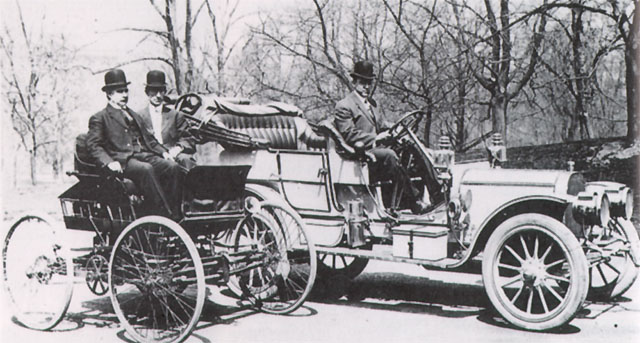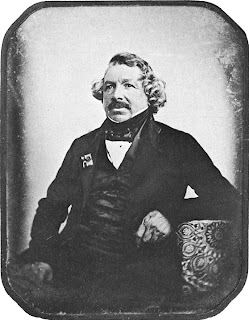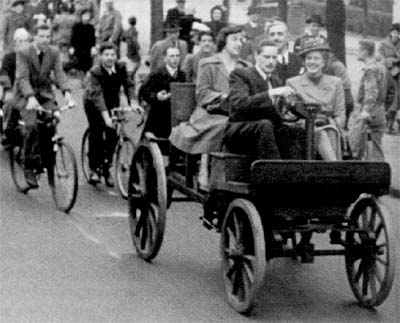The 1818 World's Fair in Iesolonon
(aka The World's Jamisionian Exposition)
As the first decades of the new century rolled on it seemed to have perpetuated a feeling hope some desire for peace and hope for unity. Tensions had even began to die down between East and West (slightly). The air was crackling with the the energy of potential as the next generations would expand intercontinental relations and ethnic biased would actually see a loosening in the wake of the social turmoils of the recent past as through the phenomenon of peace came the appreciation and fascination of all facets of the world. In recognition of this and as a show to the entire world of good faith several wealthy Saunderian families arranged an event which would unify all nations equally in awe and wonder; as well as help give birth to its next Golden Age.
Crowd on the opening day
The World's Jamisionian Exposition — also known as The Iesolonon World's Fair — was a World's Fair held on the shores of Lake Lisbon in 1818 to celebrate the 600th anniversary of Saunderia's first prime minister Jamision who's rule had sparked a golden age of culture known as the Renaissance of Reason. The fair had a profound effect on technology, the arts, architecture, and industrial optimism. In addition to commemorating the golden age of 1218, the fair also served to show the world that the East had risen from the ashes of the horrible culture of corruption that sent shock waves throughout the entire world. All nations of the Continent were invited to participate and all did including Japan and the Zulu. Millions of visitors from East and West attended, braving the elements, and the occasional pickpocket. They covered the 633 acres of Lake Lisbon Park in two to four days, some staying for a week or even more.


The first view inside the grounds was jaw-dropping. One of the major goal of the exposition was to provide to the public a blueprint for life in a modern and postmodern world. All of the main buildings were of a uniform cornice height, geometrically logical, and covered with glass windows and automatic elevators. The streets were spaced apart much wider no longer being used for carriages but for the ever improving horseless carts that were to catch on very soon. This is to say nothing of the wondrous demonstration of electricity. The small town that had been erected for the Fair was constantly alight as if the clearest of nights; only instead of being powered by starlight this illumination was powered by electricity.


Passing before the Great Pyramid as they headed north, fair goers were greeted by the enormous expanse of the Manufactures and Liberal Arts building. Manufactured goods were displayed, with price tags for comparative shopping. Goods pavilions, which contained everything from clothes to phonographs, were erected within the building by Saunderia, Germany, Spain, France, Japan, Ethiopia, Greece, and Harrapan. Furniture from the palace of the King of the Zulu was displayed, as was the manuscript of Ciaran Anthony's Inaugural address and a sword and armour set belonging to Japan's first Shogun. This was the most eclectic of exhibits, combining goods for sale with items of historical and artistic interest.


Then there was Technology Hall which was literally packed full of some of the most interesting and useless devices, gadgets, toys, weapons, and machines from across the face of the globe. The interior was generally one large room with high a massively high ceiling, crammed to the walls with exhibits. Technology not only contained exhibits such as a the automobiles that were powered by combustion engines, textile manufacturing machines, and the worlds first hand-held automatic machine-gun, but also the the expo's power plant, with 14 steam engines and 81 dynamos providing electricity for the fair.
Little did anyone suspect that these gigantic contraptions would be the doorstep to future technology
In addition to the science and arts building there were nearly 100 building contributed by 35 Saunderian districts and territories and 16 foreign countries. The exhibits were as unique and widely varied as the structures that contained them. Cordoba presented a 218 year-old tortoise, a waterfall of hot cocoa, and a giant replica of a 17th century ship made entirely of bananas; Germany boasted a the worlds first beer garden; Evora displayed pages written by the hand of Jorge Sankore along with one of his pens; and countless other exhibits of similar significance.
This was the first time in history that all known cultures of the world were represented in a just manner. Through it was mostly for novelty in th eyes of the East many other cultures still remember this event as a pinnacle of change and progress.
What this Fair came to represent was a direct challenge from the public consumer. The people who had put this Fair together were not those who were so close to those who had recently led the government take-over of the bureaucracy. These were the people who had businesses to run and products to deliver to the people. This Fair was a statement that trade cannot be stopped. The government can try as it will to put a chain over the need for people to consume goods people will still find a way to supply the demands. At the time being however, conventions like this were the only legal means to do that.
































































